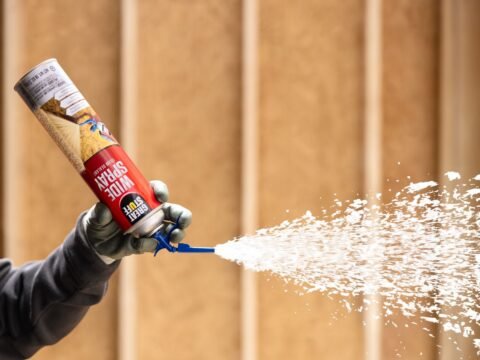- Call Us For A Quote
- (613) 319-8422
- info@613sprayfoam.ca
Spray Foam Insulation vs Fiberglass: Which is Better for Your Home?

Spray Foam Insulation for Attics: A Key Component of Home Improvement Projects
September 27, 2023
The Environmental Impact of Spray Foam Insulation: What You Need to Know
October 10, 2023Spray Foam insulation plays a crucial role in a home’s energy efficiency, indoor comfort, and even its overall value. Two popular insulation options are spray foam and fiberglass. Each has its advantages and drawbacks, and the best choice often depends on individual home needs and priorities. Let’s delve into a comprehensive comparison of both:
Material and Composition
Understanding the basic makeup of these insulations provides insight into their functionality.
– Spray Foam: A liquid polyurethane that expands and hardens upon application, filling gaps and providing an air-tight seal.
– Fiberglass: Composed of fine glass fibers woven together, it typically comes in rolls or loose-fill.
Performance and R-Value
R-value measures the material’s resistance to heat flow.
– Spray Foam: Offers a higher R-value per inch, ensuring superior thermal resistance and energy efficiency.
– Fiberglass: While effective, it generally has a lower R-value per inch compared to spray foam.
Air Sealing and Moisture Control
Controlling air leaks and moisture is paramount for insulation effectiveness.
– Spray Foam: Spray foam Ottawa provides an excellent air barrier, reducing drafts, and also offers good moisture resistance.
– Fiberglass: Doesn’t provide an air seal on its own and may absorb moisture, potentially leading to mold issues.
Installation and Flexibility
The way insulation is installed can affect its performance and longevity.
– Spray Foam: Spray foam insulation Ottawa requires professional installation with specialized equipment but can easily fill cavities, cracks, and gaps.
– Fiberglass: Can be DIY-installed (rolls) but might leave gaps if not properly fitted. Loose-fill fiberglass requires professional equipment.
Durability and Longevity
Long-term performance and the need for replacements can impact costs.
– Spray Foam: Spray foam Ottawa tends to last longer without sagging or settling, ensuring consistent performance over the years.
– Fiberglass: Can sag or settle over time, reducing its efficiency and necessitating replacements.
Safety and Environmental Impact
Health and environmental considerations are essential when choosing insulation.
– Spray Foam: Some Spray foam Ottawa types may off-gas volatile organic compounds (VOCs) initially. However, modern formulations are becoming increasingly eco-friendly.
– Fiberglass: Requires protective gear during installation due to tiny glass shards. It’s non-toxic but can be an irritant.
Cost
Budget considerations can often influence the choice of insulation.
– Spray Foam: Spray foam insulation Ottawa generally more expensive initially but can lead to significant energy savings in the long run.
– Fiberglass: Often cheaper upfront but might not provide the same level of long-term energy efficiency.
Ultimately, the choice between spray foam and fiberglass insulation depends on your home’s specific needs, budget, and long-term goals. While spray foam offers superior sealing and higher energy efficiency, fiberglass is more accessible and budget-friendly. Consulting with insulation professionals can provide clarity on the best insulation type for your particular situation.





